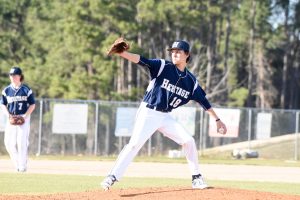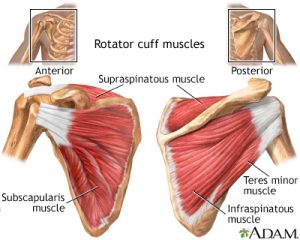Brian Schiff’s Blog
Injury Prevention, Sports Rehab & Performance Training Expert
Do you suffer with shoulder instability, shoulder weakness, poor trunk control or chronic shoulder/back pain? One of the biggest issues overhead athletes have is poor proximal stability, often leading to scapular dyskinesia. In turn, undue strain and force can cause stress on the rotator cuff and/or labrum.
In addition, nagging back pain can also occur as a result of repetitive micro-trauma. Improving pillar stability can reduce stress with hyperextension and rotation that creates stress and injuries in the lumbar spine.
This exercise is a unique and challenging way to improve shoulder and torso stability. In some instances, the stress on the wrist can be difficult, and in these cases I suggest using a closed fist on the stationary arm or moving to the knees. It is particularly effective exercise for swimmers, gymnasts, overhead athletes, and anyone with a history of shoulder instability.
If you follow my blog, then you already know I have a 16 y/o left-handed son who pitches. As a sophomore, he is in the early stages of recruiting and has been to 3-4 showcase camps. He has good size at 6’3″ tall and 184 pounds. He has been up to 82 mph.

We have been told he projects at the D1 level, but he just needs to throw a little harder. Baseball is all about bigger, faster and stronger these days. Analytics and numbers rule the day. Coaches have told us that once he consistently throws 85 plus, the offers will start to roll in.
So, the big push for many pitchers today is gaining velo. There are lots of programs and “experts” on the subject offering online programs, weighted balls, velocity training tools, throwing programs, etc. The two questions I always have are:
- What is safe for throwing athletes?
- What is effective?
As a physical therapist, I only want to pursue things that satisfy both questions above. Personally, I do not believe there is a quick fix, or any one program that will deliver the goods.
One of the bigger issues I see with athletes who have shoulder dysfunction is upper trap dominance. The upper trap needs to work in concert with he lower trap and serratus anterior for optimal shoulder function. However, in many cases, it tends to dominate the action during elevation.
I recently evaluated a professional baseball player who presented with upper trap dominance. In standing, his right scapula was elevated and slightly protracted. In many cases, you will see scapular infera in the dominant side of a thrower, but that was not the case with him. During active elevation, you could see excessive upper trap firing/activation compared to his left side. This can lead to altered glenohumeral mechanics and compression/irritation of the rotator cuff with repetitive throwing.
Performing low trap raises (the standard ‘Y’ exercise) and serratus anterior work is a no-brianer when you see something like this in order to activate the lower trapezius. But, I also like to focus on getting the client to pull the shoulder blades down and back if you will. Below is one of my favorite exercises I recently featured in PFP magazine to address this issue:
In addition, I like to use shoulder snow angels as well. Click here to see how to perform that exercise. Together, these two movements can really help eliminate upper trap dominance in your clients.
Shoulder pain is one of the most common issues I treat in my clinic week to week, There are many causes of pain, but the most common cause of shoulder pain in active individuals typically involves the rotate cuff. These relatively small muscles are called upon to manage high and repetitive loads during sports, work and daily activity.
In some cases, there is just mild inflammation that does not limit function. In there cases, there is more acute pain that makes it hard to even raise the arm or use it for the most basic things. It can be difficult to really discern if there is significant injury as even acute tendinitis can be debilitating.

Image courtesy of Medline Plus
In a blog post I wrote for my work site, I discuss the differences between tendinitis, tendinosis and tears of the rotator cuff. Click here to read more.
If you have rotator cuff pain and are looking for a simple at-home rehab plan or injury prevention program, check out my training guide at www.rotatorcufftraining.com.
Improving proximal hip stability and reducing frontal plane collapse is critical for protecting the knee. Poor frontal plane control often contributes to anterior knee pain, IT band syndrome, shin splints, plantar fasciitis and other injuries. This exercise is an advance progression of the standing pallof press, and it is very effective for enhancing single leg strength as well as hip/core stability.
Click here to read my full column on this exercise in PFP Magazine.

